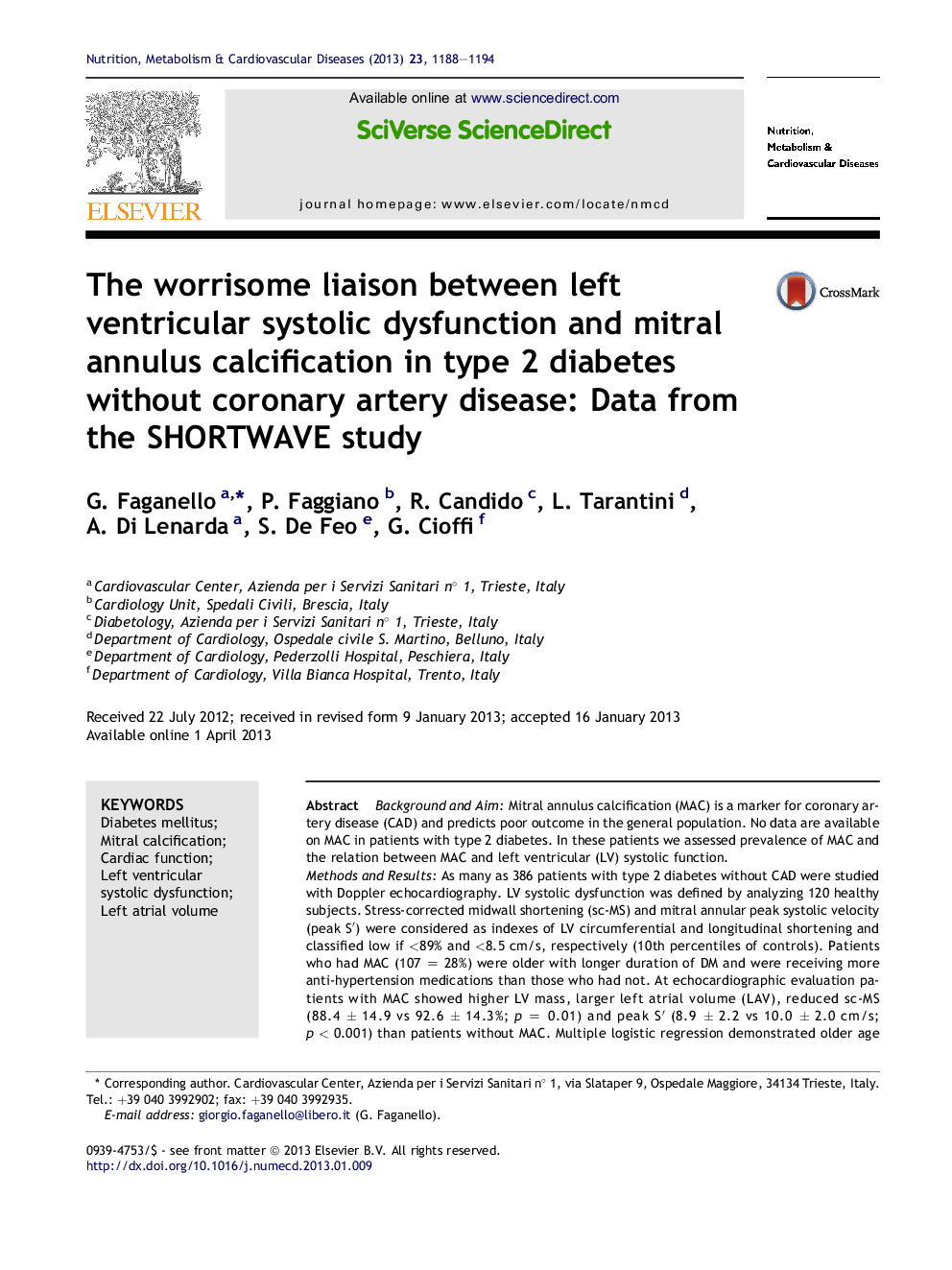| Article ID | Journal | Published Year | Pages | File Type |
|---|---|---|---|---|
| 3002184 | Nutrition, Metabolism and Cardiovascular Diseases | 2013 | 7 Pages |
Background and AimMitral annulus calcification (MAC) is a marker for coronary artery disease (CAD) and predicts poor outcome in the general population. No data are available on MAC in patients with type 2 diabetes. In these patients we assessed prevalence of MAC and the relation between MAC and left ventricular (LV) systolic function.Methods and ResultsAs many as 386 patients with type 2 diabetes without CAD were studied with Doppler echocardiography. LV systolic dysfunction was defined by analyzing 120 healthy subjects. Stress-corrected midwall shortening (sc-MS) and mitral annular peak systolic velocity (peak S′) were considered as indexes of LV circumferential and longitudinal shortening and classified low if <89% and <8.5 cm/s, respectively (10th percentiles of controls). Patients who had MAC (107 = 28%) were older with longer duration of DM and were receiving more anti-hypertension medications than those who had not. At echocardiographic evaluation patients with MAC showed higher LV mass, larger left atrial volume (LAV), reduced sc-MS (88.4 ± 14.9 vs 92.6 ± 14.3%; p = 0.01) and peak S′ (8.9 ± 2.2 vs 10.0 ± 2.0 cm/s; p < 0.001) than patients without MAC. Multiple logistic regression demonstrated older age (OR 1.03 [IC 1.01–1.06], p = 0.009), larger LAV (OR 1.19 [IC 1.11–1.28], p < 0.001) and combined reduction in sc-MS and peak S′ (OR 3.00 [IC 1.57–5.72], p = 0.001) as independent factors associated with MAC.ConclusionsMAC is detectable in one fourth of patients with type 2 diabetes without CAD and is mostly related to LV systolic dysfunction expressed as combined impairment of LV circumferential and longitudinal fibers, independent of age and LAV.
